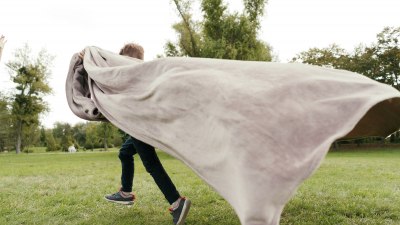The Real Reason You Bought That Sweater You’ll Wear Once
Explore the psychology behind impulse buying and seasonal fashion choices in this enlightening article.

Image by cookie-studio on Freepik
Have you ever found yourself purchasing a trendy sweater, only to realize later that it will be worn only once? This phenomenon is surprisingly common, and it often stirs up feelings of regret and frustration. Understanding the underlying reasons behind this behavior can reveal much about consumer psychology, societal pressures, and personal habits.
One of the primary reasons why we buy items we may only wear once is the allure of fashion trends. Trends are often displayed as part of a curated lifestyle in magazines, social media, and advertisements. This constant exposure to 'ideal' lifestyles can trigger a desire to fit in or project a certain image. For instance, when a particular type of sweater becomes the 'it' item for the season, one may feel an urgent need to purchase one to stay relevant. This can lead to impulse buying, where the emotional desire to conform outweighs practical considerations.
Emotional Triggers and Impulse Buying
Beyond societal pressures, our emotions play a significant role in impulsive purchasing. Retail therapy, or shopping to cope with negative emotions, is a well-documented behavior that many people engage in. A fuzzy sweater, for example, might represent comfort during a tough week. When you're feeling low or stressed, the act of buying something new can provide a temporary boost in mood. Unfortunately, after that initial burst of happiness wears off, the reality sets in – that purchase might not have been necessary or wise.
Moreover, cognitive biases, such as the 'scarcity effect,' can make us feel like we need to act quickly to avoid missing out on a desirable item. When a cute sweater is labeled as 'limited edition,' it ignites a fear of missing out (FOMO), leading to a rushed purchase decision. In these moments, logic often takes a back seat to emotion, resulting in garments that end up in the back of our closets after only a day of wear.
The Influence of Marketing and Advertising
Marketing strategies capitalize on these psychological triggers. Companies often use techniques that highlight exclusivity and urgency, encouraging consumers to buy items they may not genuinely need. Promotions like 'buy one, get one free' or limited-time discounts can also steer consumers toward purchases that lack long-term desire or necessity. To make matters worse, sophisticated algorithms on social media platforms bombard users with ads tailored to their likes and previous purchases, perpetuating the cycle of impulse buying.
In the context of fashion, brands often launch 'seasonal collections' which can create a sense of urgency and necessity to buy new items that might not be aligned with actual wardrobe needs. It’s easy to get swept away in the moment and make a purchase based on the fleeting trend rather than a well-thought-out decision.
The Illusion of Wardrobe Utility
Another contributing factor is the misconception of versatility. A particular sweater may seem like an excellent addition to our wardrobe due to its trendy color or unique style. However, once we bring it home, we might find that it doesn't match many of our existing outfits, or simply isn't suitable for multiple occasions. This mismatch leads to guilt and a realization that the item was not as practical as we initially thought.
The allure of having a unique piece can also cloud our judgment. The desire to appear fashionable and distinctive often outweighs considerations such as how often we will realistically wear a garment. Many consumers fall into the trap of envisioning multiple occasions where they could wear the sweater, only to find themselves limiting it to one or two events.
Social Media and the Culture of Overconsumption
In today’s digital age, social media plays a critical role in influencing our shopping habits. Platforms like Instagram and TikTok have cultivated a 'shop now' culture where influencers regularly showcase their latest clothing hauls, creating a feedback loop that spurs users to purchase similar items. The relentless visual exposure to new fashion trends can result in a desire to emulate influencers without considering our own unique style and needs.
The phenomenon of 'review culture' can also exacerbate the impulse to buy. When we see others raving about how a particular sweater is a must-have, we may feel pressured to acquire it to stay aligned with that social narrative. This collective behavior encourages a cycle of consumption, pushing individuals to buy more items than they actually need.
Environmental Impact and Sustainable Choices
As awareness grows regarding the environmental impact of fast fashion, many people find themselves grappling with feelings of guilt over their shopping habits. Each impulse purchase not only contributes to waste but often leads to an unsustainable cycle of wear-once-and-discard behavior. A single sweater may seem innocuous, but when multiplied across billions of consumers, it signifies a larger problem.
Shifts toward sustainability indicate that many consumers are beginning to recognize the importance of making more thoughtful choices. Brands are responding by starting to emphasize longevity and investment pieces over throwaway fashion. However, breaking the habit of impulse buying remains a challenge, especially when attractive options are readily available.
Creating a More Thoughtful Wardrobe
For those striving for a more intentional approach to fashion, a few strategies can help mitigate the impulse to purchase items that won’t be worn more than once. One effective method is to implement a 'cooling-off' period before making any purchases. Allowing yourself time to consider whether you truly need the item can help curb impulse buying and promote more thoughtful decisions.
Additionally, curating a minimalist wardrobe can also alleviate the burden of impulse purchases. By focusing on a capsule collection of versatile, high-quality pieces that pair well together, you can prevent the pitfalls of trendy, one-time garments. This mindset encourages buying with intention, prioritizing fabric quality, and durability over fleeting trends.
Embracing Mindful Consumption
At the end of the day, recognizing the reasons behind why we purchase items like that sweater we’ll only wear once is the first step towards fostering more sustainable shopping habits. By understanding the emotional, social, and marketing influences at play, we can make more conscious decisions about the items we choose to bring into our lives. Embracing mindful consumption not only benefits our personal finances but also has a positive ripple effect on the environment and society as a whole. So the next time you find yourself drawn to that alluring sweater, take a moment to consider whether it's a need or just a fleeting desire. In doing so, you may discover a wardrobe that serves you far better over time.











